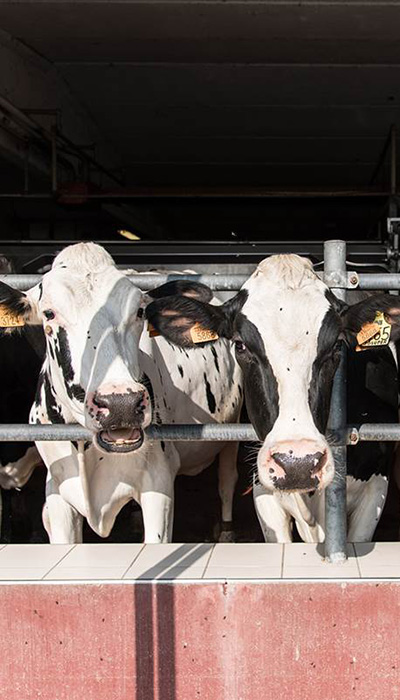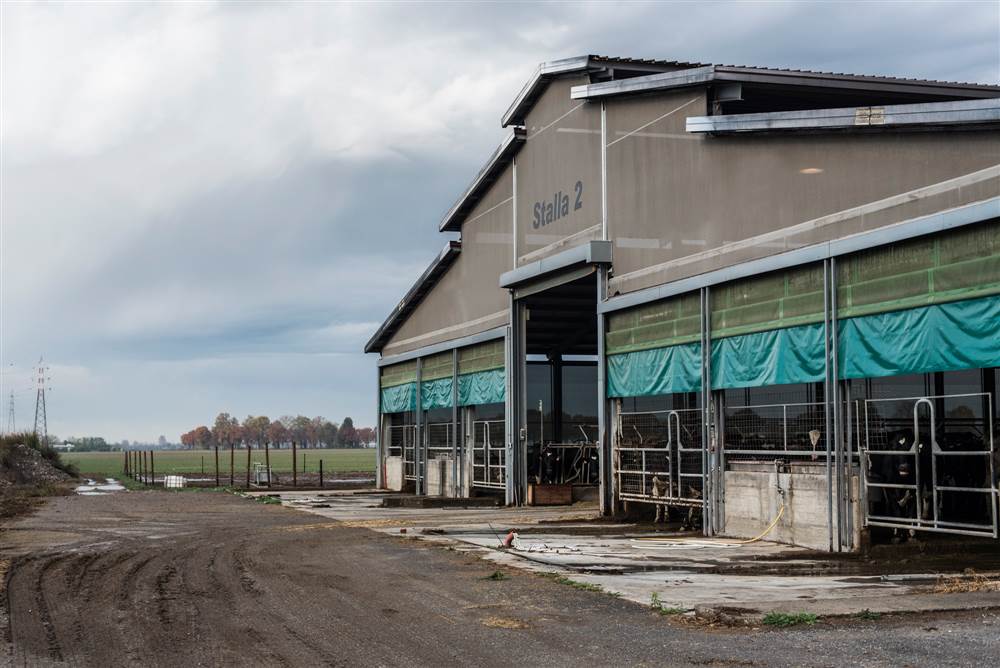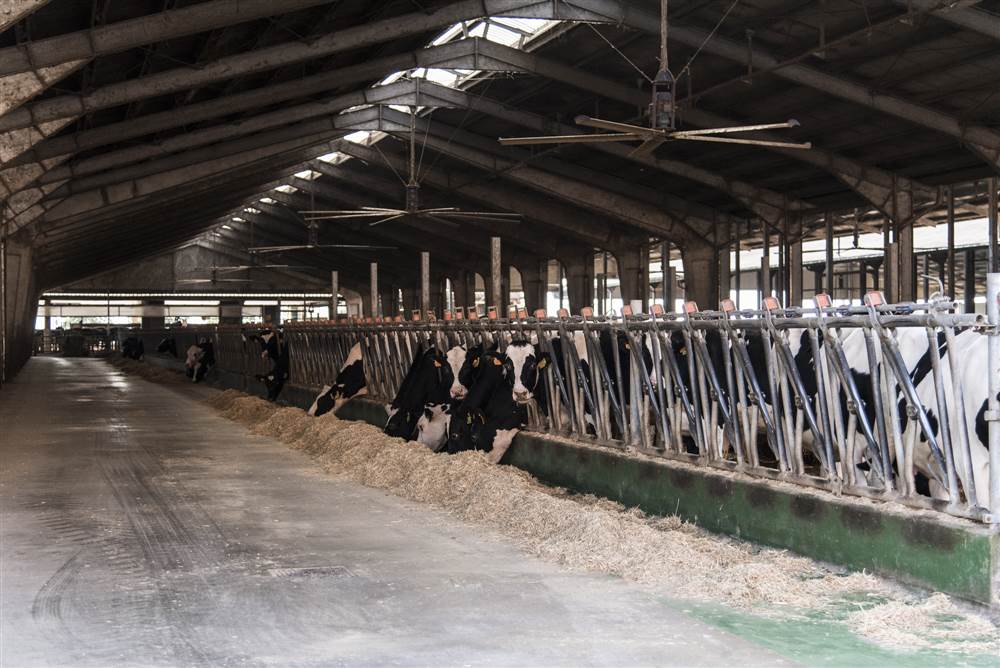
Animal Welfare
Care for animal wellbeing
The “Grana Padano PDO system” has always paid great attention to the quality of its production and to the everyday measures it takes to achieve this quality, thus ensuring the consumer a healthy and genuine product.
Quality is never achieved overnight. It is attained by constantly investing effort and resources in research and in the application of current regulations, while also valorising every aspect of the productive process, from the field and the stable to the cheese factory, and on to the maturing and packaging processes.
The path to producing Grana Padano PDO starts from the field, with the selection of suitable feed for cattle, and the use only of quality milk– which must come from well fed, healthy and well cared-for cows – will result in quality cheese.
The almost 4,500 cattle farms that provide milk to the cheese factories which produce Grana Padano PDO are perfectly aware of this rule. And the Protection Consortium focuses strongly on the issue of sensitivity towards, and respect for, the animals, insisting that its milk suppliers treat their herds well and provide for their wellbeing by using virtuous production procedures.
The feed, forage and fodder fed to the animals must comply with the Grana Padano Production Specification Rules, and this is ensured by a system of periodic controls carried out by an external body independent of the Consortium, CSQA, an accredited certification company, recognised by the MiPAAFT for the certification of Grana Padano PDO.
A milk cow that is well looked after, and therefore healthy, produces better milk, from every viewpoint, including related to cheesemaking. It is consequently in the interests of every efficient and intelligent milk supplier to take great care of their herd, in order to protect their company’s activities and, above all to guarantee quality to consumers.
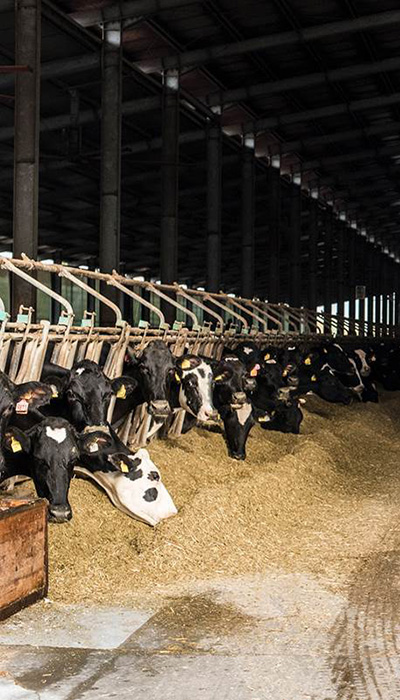
The living conditions of the dairy herds
For livestock farmers, correct herd management is their top priority. They achieve this by adopting automatic systems for assessing their animals’ morpho-physiological parameters with the increasingly widespread use of special sensors that ensure constant herd monitoring and immediate intervention in the case of specific needs of individual animals, with clear benefits for the herd.
The cows sleep in stall berths large enough to ensure greater comfort for the animals, and prevent them getting in each other’s way during rest periods. Special care is taken to ensure that the bedding is constantly kept clean. Many farm structures allow the cows to move and feed as they wish, with evident positive effects on their wellbeing; the cow barns are designed to ensure good natural ventilation, guaranteeing adequate air circulation, to ensure cooling in summer and warming in winter, with evident benefits for the cows; the current revision of our regulations also foresees the adoption of a robotic milking system which allows each single cow to decide when it wants to be milked: another major wellbeing improvement, reacting to the individual needs of each animal.
In herd management, special attention is paid to operational procedures designed to avoid potentially stressful situations that can negatively affect the animal’s health and wellbeing, which completely negates the very idea of wellbeing, for example, connected to grazing on green pastures. During grazing, animals can easily develop deceptive pathological forms which can lead to excessive weight loss. To counteract this, farmers are frequently forced to administer typical intensive-farming feeds even in Alpine grazing contexts: this risks making nonsense of the very idea of mountain pastures and compromising the proper use of their grazing potential.
Lactating cows tend not to move outdoors with ease, finding it more comfortable to eat and drink in their stalls, where they can also lie down on prepared beds of hay. Calves and non-lactating cows, on the other hand, are more inclined to go outside and graze. But cows practically never go outside in hot summer conditions, preferring the shady conditions indoors, which are frequently also cooled using fans with nebulisers. Likewise, they also tend to stay indoors when it’s windy or in the winter when there is fog, humidity or wet ground where their hooves tend to sink, making movement more tiring.
Summer cattle grazing in the mountains is a traditional agricultural activity in the Alpine area, having been developed as a way to optimise the use of forage and farm labour resources. This practice undoubtedly has positive sides to it and, after a period of relative decline, it has recently been revalued and is currently widely used, especially by farms situated in highland areas that raise suitable cattle breeds.
Roughly 15% of the dairy farmers who supply milk to Grana Padano Protection Consortium cheesemakers are totally committed to making use of Alpine pastures, especially those located in pre-Alpine areas and, obviously, in the Alpine parts of Lombardy, Veneto, Trentino (South Tyrol) and Emilia. At least another 10% of the cattle farms in the lowland plains send their animals to highland pastures, and a further 30% have fields as well as stalls, where the cows can move freely. The situation in the lowland plains is naturally different, for reasons of tradition, culture and livestock methods (e.g. feeding practices, cattle barn techniques, distance from mountains and pastures, and breeds raised). However, we cannot forget that starting in the 1950s, when open stalls became popular, the area’s typical large and small livestock tethered barns found on every farm began to disappear.
The typical dairy cattle breed raised in the plains is the Friesian breed, which has also become common in the mountains, given that many Alpine farms have switched to a lowland-type farming model, which is more efficient from a productive viewpoint. Sometimes, a few dairy farmers transport their Friesians to Alpine pastures. Friesians also adapt quite well to Alpine summer grazing, providing they have got used to it from an early age, and providing the conditions are favourable (distance, steepness, stony or rocky terrain, and ample high-standard grazing pastures).
Regulations
After an initial to verify the present situation, a series of measurable standards will be introduced in 2020, defining the levels of insufficiency that will result in the exclusion of the dairy farm from the Grana Padano PDO circuit, the long-term objective being to optimise all cattle breeding conditions. Regarding the cows’ diet, the forage and fodder– in compliance with our Consortium regulations – must originate almost entirely from the Grana Padano PDO production area, i.e. from areas of Northern Italy where GMO production is prohibited. Only soya, which accounts for a tiny part of the cattle’s standard diet, if imported, can be genetically modified. In any case it will have to be produced “responsibly” according to the RTRS (Round Table on Responsible Soy) standard approved by the European Commission to meet the requirements of the EU’s Renewable Energy Directive.
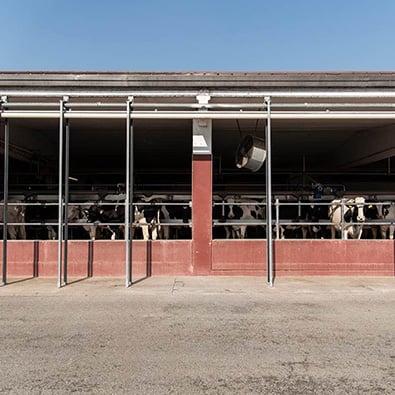
Assessing Animal Welfare
The protection of livestock animals and their wellbeing have always been priority goals for European and Italian lawmakers. With the Lisbon Treaty, Europe already recognised animals as “living beings” and the lawmaker issued mandatory regulations for respecting animal welfare. And failure to comply with these regulations could lead to the application of sanctions, including important ones. Additionally, all livestock farmers are obliged to comply with what are known as GOOD AGRICULTURAL PRACTICES (GAP). Failure to do so will result in their exclusion from access to Common Agricultural Policy (CAP) payments and funding from Rural Development Programs (RDP), as well as the application of fines.
Italy has launched a national plan for animal wellbeing – the “Piano Nazionale per il Benessere Animale (PNBA)” (animal welfare national plan) – in order to comply with national and European regulations and to standardise the execution and programming of control procedures while also improving the expertise of veterinarians and livestock producers concerning the key issues of animal wellbeing.
All dairy farms involved in supplying milk to the Grana Padano PDO system must comply with mandatory rules and are subject to regular controls by the competent organs (veterinarians from local health services) in order to verify their compliance with current regulations and to guarantee ongoing training, ensuring that they are adequately informed on how they can improve livestock practices so as to improve animal wellbeing.
In this scenario, the ClassyFarm system of the Ministry of Health sets forth guidelines which are optional but provide indications for the assessment of the risk applied to the wellbeing of farm animals. These guidelines are based on the minimum legislative provisions in force, the EFSA recommendations on animal wellbeing, the European Welfare Quality® research project, the indications contained in the draft law on adult cattle wellbeing discussed in the 2007-2009 triennial in Strasbourg, and on the most important relevant studies on animal wellbeing published over the last 10 years.
Not only do the dairy farms that supply the Grana Padano Consortium comply with these guidelines, they go further. As mentioned, the Assembly of the Grana Padano Protection Consortium, voted to introduce, as soon as possible, a monitoring tool checking system that imposes compliance with animal wellbeing laws, with failure to do so excluding the farmer from the circuit. The objective is to gauge animal wellbeing objectively.
Looking after and protecting animal wellbeing is a fundamental principle of society and is the first priority of the Grana Padano Protection Consortium: it improves productive performance, product quality and nutritional values, as well as protecting the consumer and the economic interests of dairy farmers and of Italy’s productive system. This is why the collective commitment of all those involved in the Grana Padano PDO production chain is constantly orientated towards raising the level of animal wellbeing, most of the time setting itself higher standards than the legal requisites. After all, for the Grana Padano PDO system the wellbeing of the cattle involved is the “conditio sine qua non” for producing a cheese excellence that will satisfy the market, to everybody’s advantage, from consumers to producers.
Details of the system for assessing the cows’ wellbeing defined by the Ministry of Health, thanks to the contribution of the Experimental Zootechnic Institute of Lombardy and Emilia Romagna, can be consulted on the website ClassyFarm. In short, from the reported documentation we can see that the method is based on the analysis of two groups of data::those directly connected with the dangers deriving from the immediate environment (management, structures, equipment and microclimatic conditions) and those connected with the adverse effects (with negative effects on wellbeing) experienced by the animals due to one or more of the dangers above.
When deciding the aspects on which to focus evaluation, the ClassyFarm system favoured measures clearly supported by scientific evidence and with objective and easily measurable criteria, thus making it possible to compare different livestock situations using the same evaluation criteria, ensuring greater objectivity in assessing the conditions affecting the animals’ wellbeing.
For the Grana Padano PDO production system, this is not the first time that a number of farms are assessed from the animal welfare perspective. In fact, as early as 2014, as part of a national research project, a random sample of 134 farms had already been visited, presenting animal welfare conditions that exceeded the acceptable levels by far.
The Grana Padano Protection Consortium decided to count on the collaboration of the ClassyFarm system of the Ministry of Health, developed by a national, independent and highly competent institute, basing its work on legal requirements and scientific studies, in order to establish the animals’ real living conditions and needs, and not just our own expectations. We wish to underline the high importance of animal wellbeing being evaluated by expert and trained personnel, such as specifically trained and employed veterinarians.
Modern dairy animal husbandry (or zootechnics) on plains: most dairy farming companies today, in order to boost efficiency, invest strongly – thanks also to RDP contributions – in environmental sustainability, energy efficiency and also in providing their animals with the best available solutions for promoting their wellbeing, by creating a modern closed-cycle facility for milk cows, equipped with the latest technology for providing both savings and animal wellbeing. With this goal in mind, today the majority of dairy farms which are part of the Grana Padano PDO production system confront market challenges in the following ways:
1. producing electricity from renewable sources;
2. reducing nitrogen, phosphorus and potassium in wastewater;
3. producing less CO2;
4. heat recovery;
5. sanitised wastewater;
6. water savings;
7. energy savings;
8. economic sustainability.
Labelling
The Grana Padano Protection Consortium, along with its member cheesemakers and dairy farm milk providers, has a direct interest in communicating in an appropriate, detailed and adequate way all the daily activities that go into caring for the cattle which are the point of departure for local production systems combining the historic traditions of Grana Padano PDO with innovative modern livestock techniques which respect both the environment and the animals involved and ensure adequate profitability to all those working in the production chain.
This is why we have invented a new logo: “Il nostro latte” (Our milk), a label generated by the desire to satisfy the consumer’s demand for traceability, thus further guaranteeing the quality, uniqueness and origin of milk from a specific protected territory. This logo can be used voluntarily by all consortium members and authorised packers, on all the packs of Grana Padano PDO destined for both the Italian and foreign markets. The new “Il nostro latte” logo is governed by a regulation which establishes limits and conditions for the concession of the use of the logo created and registered by the Grana Padano PDO Protection Consortium to packing companies.
